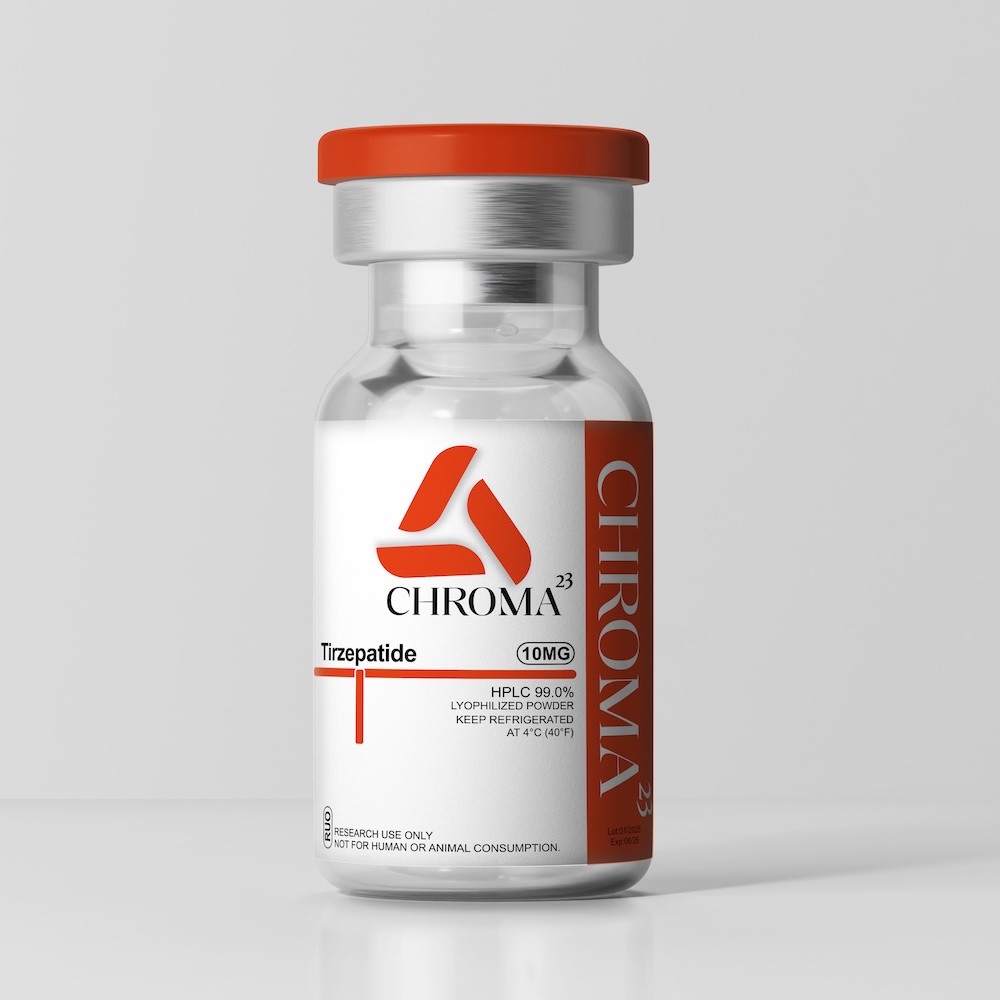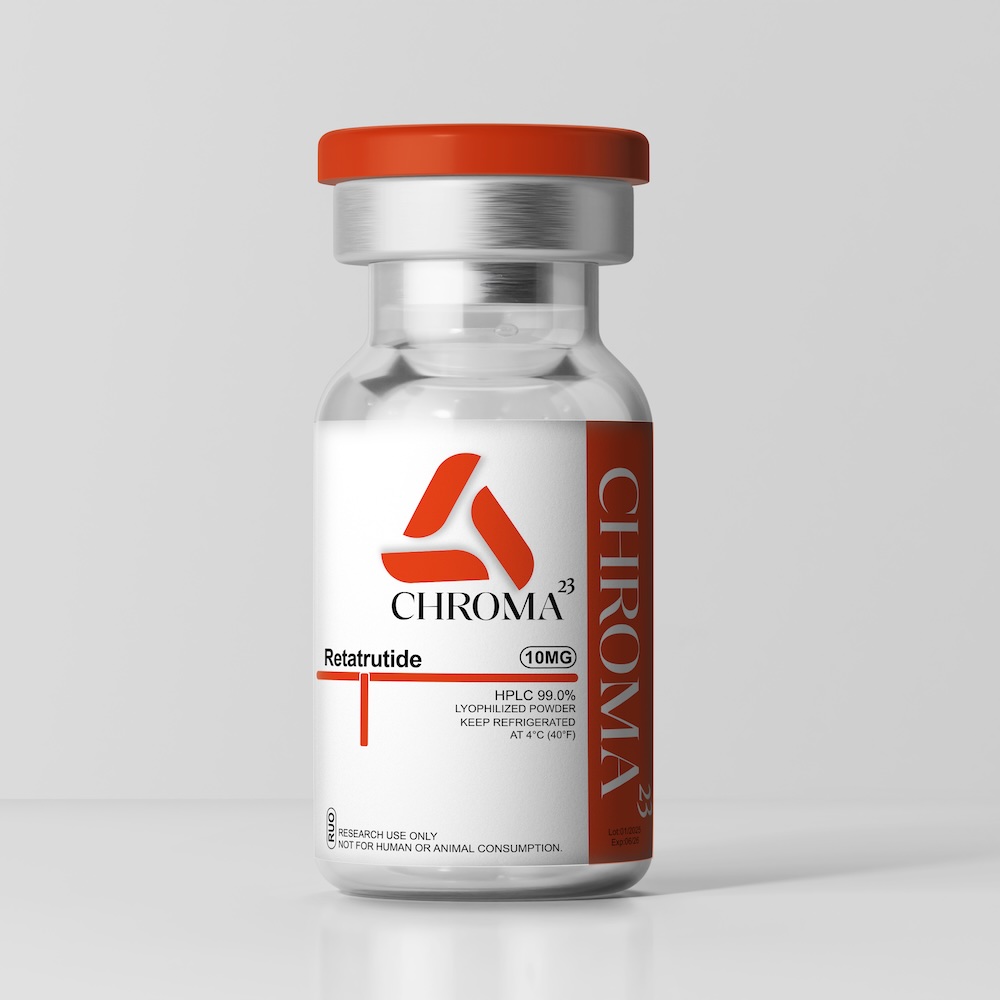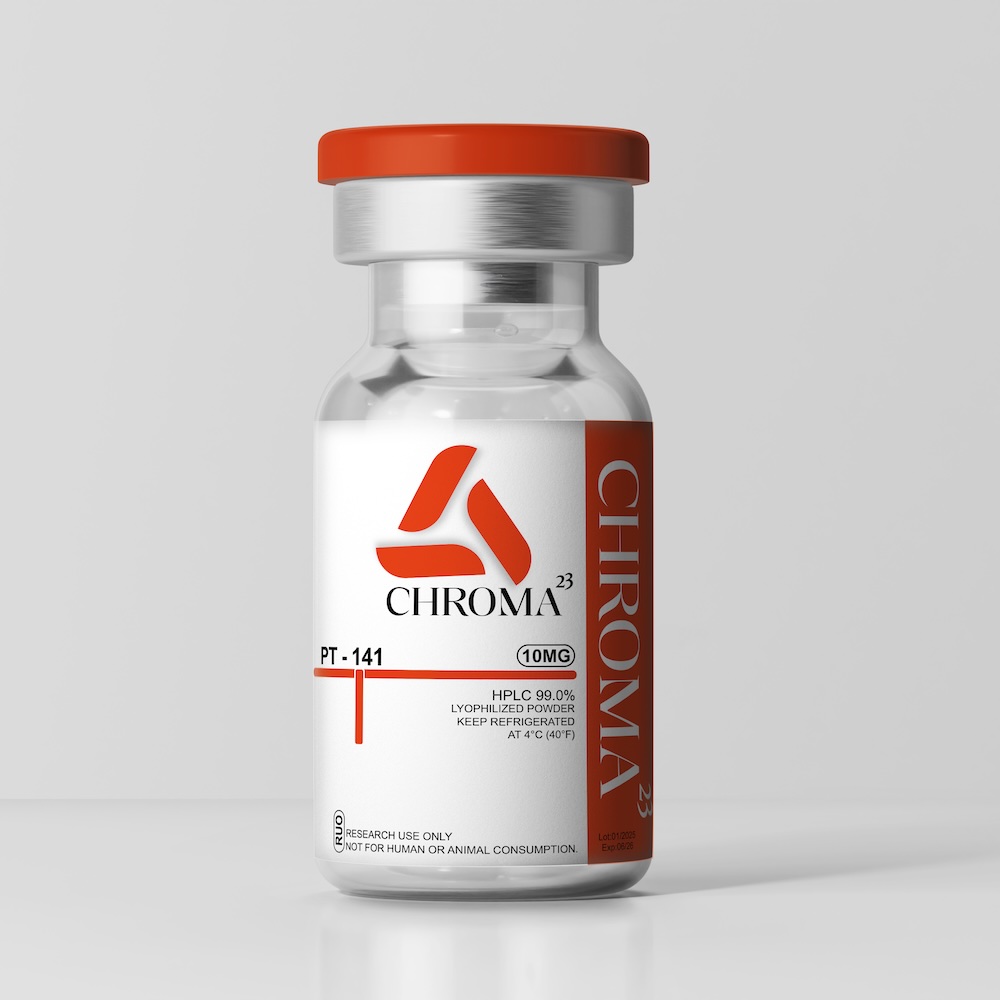Tirzepatide is a synthetic analogue of gastric inhibitory polypeptide (GIP) that was developed for its ability to stimulate insulin release and thus address both type 2 diabetes and non-alcoholic fatty liver disease. Made up of 39 amino acids, the relatively large Tirzepatide stimulates the release of insulin from the pancreas by binding to both GIP and GLP-1 (glucagon-like peptide-1) receptors. Taken over longer periods of time, Tirzepatide increases adiponectin levels by as much as 26% as well[1]. Research shows that Tirzepatide reduces feelings of hunger, lowers insulin levels, and increases insulin sensitivity. Taken together, these effects cause significant weight loss of 11 kg (25 lbs), improve glucose tolerance, decrease fat (adipose) tissue, and reduce cardiovascular risk.
Amino Acid Sequence: YE-Aib-GTFTSDYSI-Aib-LDKIAQ (C20 fatty acid) AFVQWLIAGGPSSGAPPPS
Note: Aib is a non-coded (non-proteinogenic) amino acid – H2H-C(CH3)2–COOH
Molecular Formula: C225H348N48O68
Molecular Weight: 4813.527 g/mol
PubChem CID: 156588324
CAS Number: 2023788-19-2
Synonyms: P1206, LY3298176
Surpasses effectiveness of GLP-1
While both GLP-2 and GLP-1 are peptides designed to address metabolic issues, GLP-2 appears to surpass GLP-1 in terms of effectiveness. GLP-2, a synthetic analogue of gastric inhibitory polypeptide (GIP) with dual GLP-1 functionality, has demonstrated remarkable efficacy in various aspects of metabolic health. In comparison to GLP-1, GLP-2 has shown superior effectiveness, particularly in inducing fat loss by reducing both visceral and subcutaneous fat. Studies indicate that GLP-2 provides significant weight loss, with reductions in adipose tissue contributing to improved metabolic outcomes.
Induces fat loss by reducing visceral and subcutaneous fat
One of the notable benefits of GLP-2 is its ability to induce fat loss by specifically targeting both visceral and subcutaneous fat. Studies have shown that GLP-2 provides significant reductions in adipose tissue, contributing to overall weight loss. This targeted effect on fat loss sets GLP-2 apart and positions it as a potent intervention for individuals aiming to address excess fat.
Preserves lean mass
In addition to its effectiveness in fat loss, GLP-2 has shown the unique ability to preserve lean mass. Unlike some weight loss interventions that may lead to the loss of both fat and lean tissue, GLP-2 appears to have a more targeted effect on reducing fat while maintaining lean muscle mass. This characteristic is crucial for promoting overall health and preventing the negative consequences associated with muscle loss.
Lowers liver fat
Moreover, GLP-2 has demonstrated efficacy in lowering liver fat. Excessive liver fat is a common issue and interventions that can effectively address this aspect contribute to improved liver function and overall metabolic health. GLP-2’s ability to lower liver fat adds to its comprehensive profile as a metabolic health intervention.
In summary, GLP-2 exhibits a range of positive effects, including surpassing the effectiveness of GLP-1, inducing significant fat loss, preserving lean body mass, and lowering liver fat. These attributes position GLP-2 as a promising candidate for the treatment of metabolic conditions and underscore its potential to address multiple facets of metabolic health.




